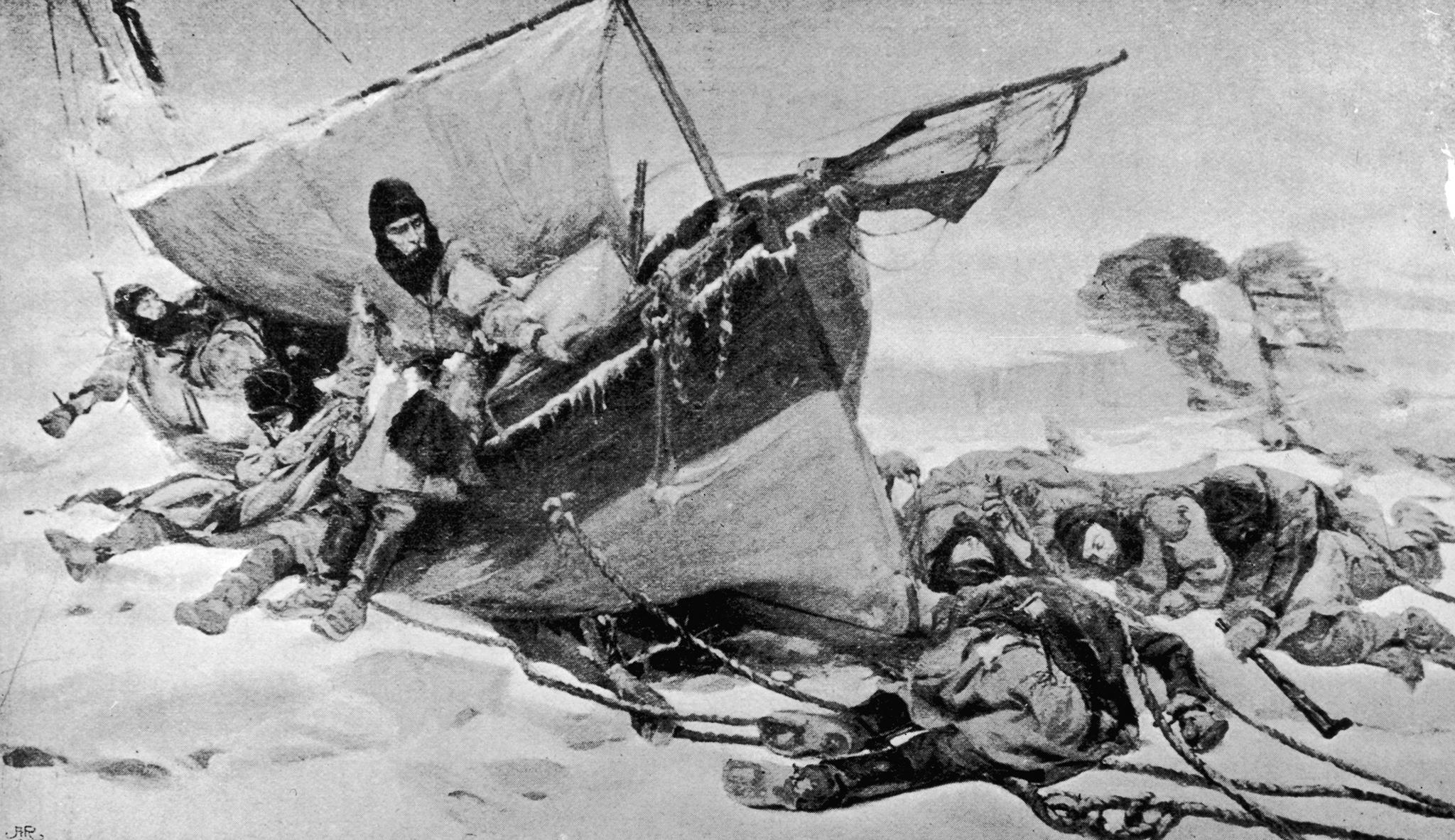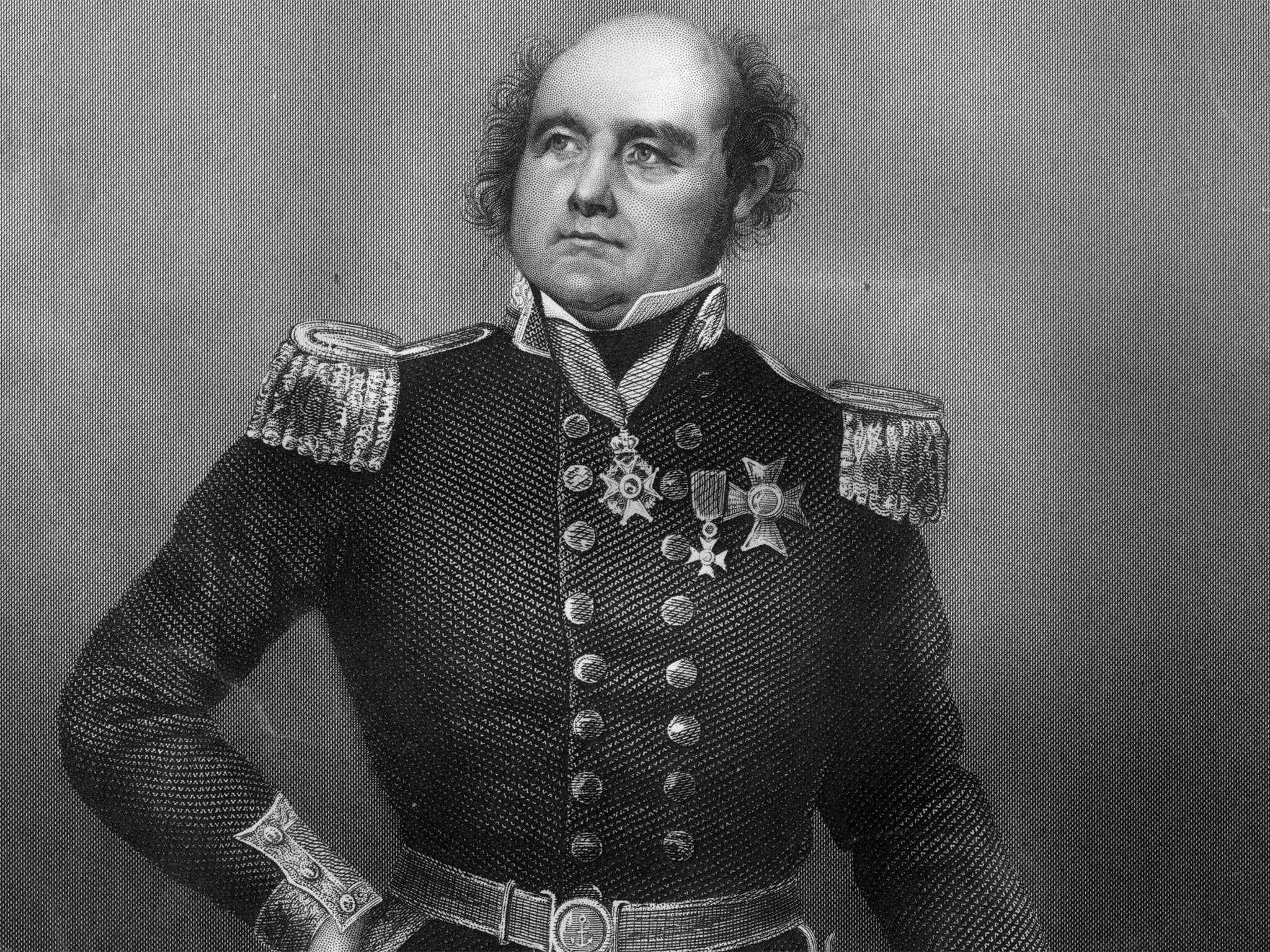Mystery of Sir John Franklin's doomed mission to find the Northwest Passage solved
One of two ships from the Franklin Expedition, lost in 1846, has been found in the Arctic

Your support helps us to tell the story
From reproductive rights to climate change to Big Tech, The Independent is on the ground when the story is developing. Whether it's investigating the financials of Elon Musk's pro-Trump PAC or producing our latest documentary, 'The A Word', which shines a light on the American women fighting for reproductive rights, we know how important it is to parse out the facts from the messaging.
At such a critical moment in US history, we need reporters on the ground. Your donation allows us to keep sending journalists to speak to both sides of the story.
The Independent is trusted by Americans across the entire political spectrum. And unlike many other quality news outlets, we choose not to lock Americans out of our reporting and analysis with paywalls. We believe quality journalism should be available to everyone, paid for by those who can afford it.
Your support makes all the difference.It was to be his final and greatest adventure – the last hurrah of perhaps the greatest British maritime explorer of the Victorian age.
In 1845, two decades after his last mission to the Arctic, Sir John Franklin set out in search of the illusive Northwest Passage which, it was hoped, might provide a lucrative shortcut for trade ships between the Pacific and the Atlantic. He was never to return.
What became of his two vessels, HMS Erebus and HMS Terror, and the fate of his 128 men in the hostile, ice-gripped polar seas has remained one of the most compelling unsolved mysteries of empire.
Today, however a jubilant Canadian Prime Minister announced a breakthrough in the quest to piece together the final moments of the voyage when he revealed that marine archaeologists had identified one of the lost ships off King William Island.
He told journalists in Ottawa: “This has been a great Canadian story and mystery and the subject of scientists, historians, writers and singers so I think we really have an important day in mapping the history of our country.”
The Canadian government has lavished lavishing millions of dollars on the hunt which has become a high-profile symbol of the nation’s sovereignty over the Northwest Passage, as melting sea ice resulting from global warming has left the route increasingly open to shipping.
Since 2008 there have been six searches led by Park Canada, which is responsible for national artifacts and sites, covering hundreds of miles of Arctic seabed.
Using a remotely operated underwater vehicle scientists were able to verify sonar data locating the ship. The discovery was confirmed on Sunday and comes shortly after archaeologists recovered an iron fitting that once helped support a boat from one of the doomed expedition's ships.
It is far and away the most significant find since the loss of the vessels 160 years ago and follows tantalising discoveries in recent decades including that of the bodies of three crewmen in the 1980s.
The loss of Franklin’s expedition had a profound psychological effect on Britain at the height of its imperial power. When at the age of 59 Franklin, a veteran of Trafalgar, offered to make a fourth trip to the Arctic, the Admiralty was only too willing to accept.

His earlier voyages had helped map thousands of miles of coastline and provided vital data on the weather, geology and ecology of the region.
The officer was all too aware of the peril he faced in a region where the sea froze solid all year and where temperatures routinely plunged to -50F. On his second voyage the party ran out of food and was forced to eat the leather parts of their clothes to survive.
The final expedition was assiduously prepared. The two ships were clad in iron to help them cut through the towering icebergs. There was enough food on board to last three years although much of this was preserved in tins sealed in lead, which it has been claimed later poisoned the men, making them weak, fractious and disorientated.
A final siting of the two ships was made by a whaler off Baffin Island on July 26 1845. Two years later nothing had been heard from Franklin.

Such was the clamour to save him that 39 expeditions were sent to rescue him. His wife Lady Jane spent her fortune trying to find her husband, dispatching her own yacht and captain to the region. He was told by local Inuit that the men had been spotted dropping dead as they walked across the ice.
As well as providing vital breakthroughs in Arctic survival techniques and the eventual conquest of the passage itself, rescuers pieced together the crew’s final moments following the discovery of two letters.
It emerged that the ships became trapped in the ice in the winter of 1846-7 forcing the men to abandon the vessels and head south following Franklin’s death in June 1847. Some were forced to turn back whilst others continued in search of the thaw. None of them survived.
Join our commenting forum
Join thought-provoking conversations, follow other Independent readers and see their replies
Comments